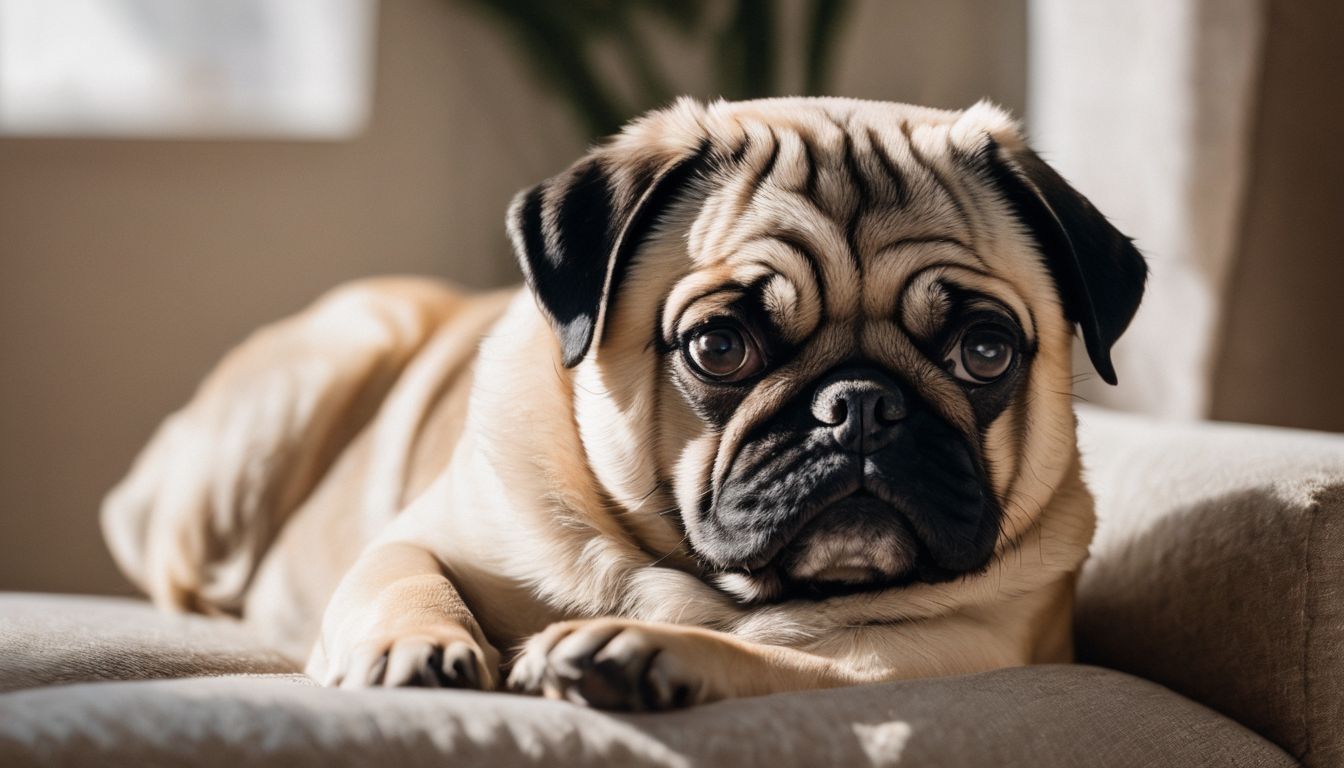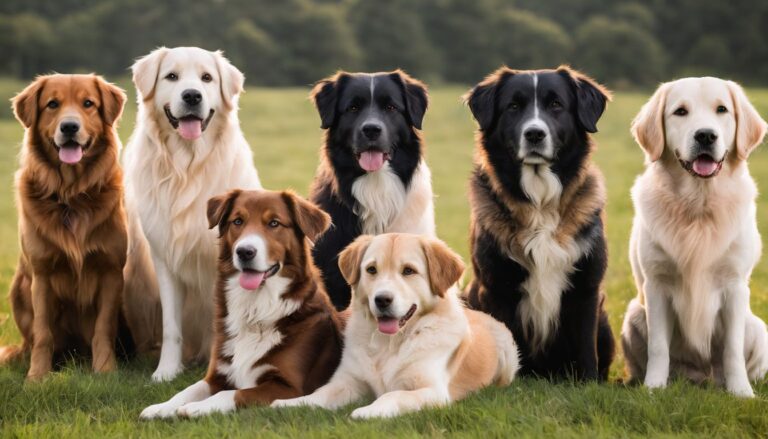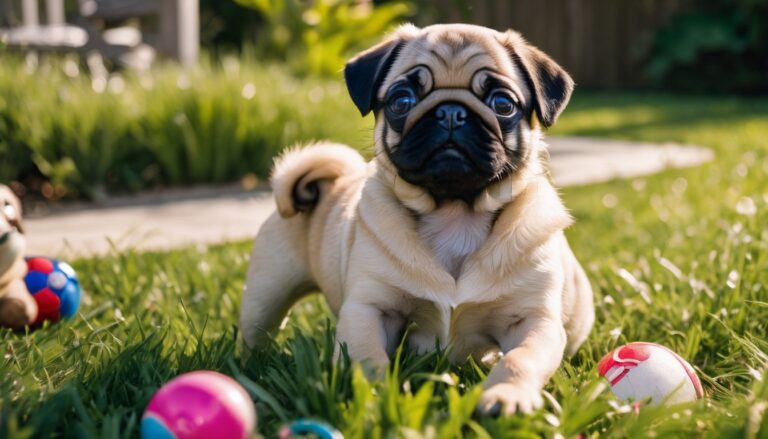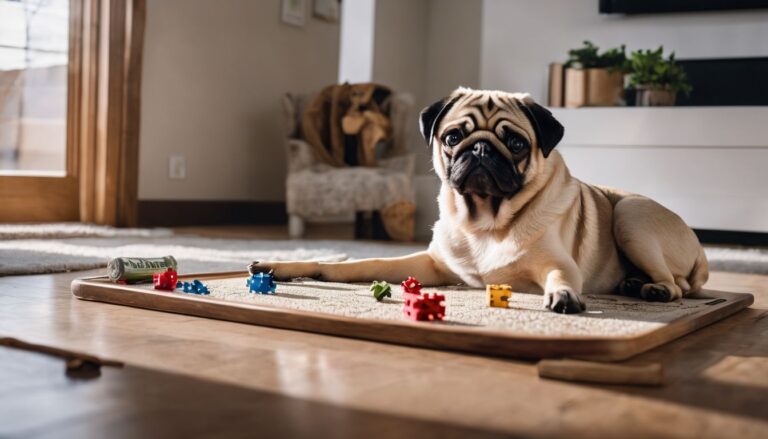Unveiling The Truth: Are Pugs Aggressive?
Are Pugs Aggressive?
We understand the worry that can come with those sideways glances your lovable pug might throw someone’s way. Trust us, as fellow pug parents, we get it. We’ve taken these concerns to heart and rolled up our sleeves to dig into whether our adorably wrinkled companions have a sneaky aggressive streak lurking beneath their snuggly exteriors.
Our journey through piles of research and countless cuddle sessions has led us to a comforting conclusion: in general, pugs are as peaceful as they come—a fact supported by plenty of studies highlighting their affable nature.
Let’s walk together down the path of creating a nurturing space for your furry friend while putting those tall tales of temperamental tendencies to rest!
Key Takeaways
- Pugs are generally not aggressive by nature; they were bred to be companionable lap dogs and thrive on human interaction.
- Socialization, training, and a structured environment with positive reinforcement are critical in preventing aggressive tendencies in pugs.
- Fear, anxiety, lack of socialization, and improper breeding can contribute to aggression in pugs. Recognizing signs like growling or snapping early can prevent future aggression issues.
- Consistent rules and boundaries set within the home help reduce anxiety for pugs which may lower the risk of displaying aggressive behaviors.
- If signs of aggression do appear in your pug, it’s important to consult professional dog trainers or behaviorists and possibly a veterinarian to address any health concerns contributing to the behavior.
Understanding Pug Temperament
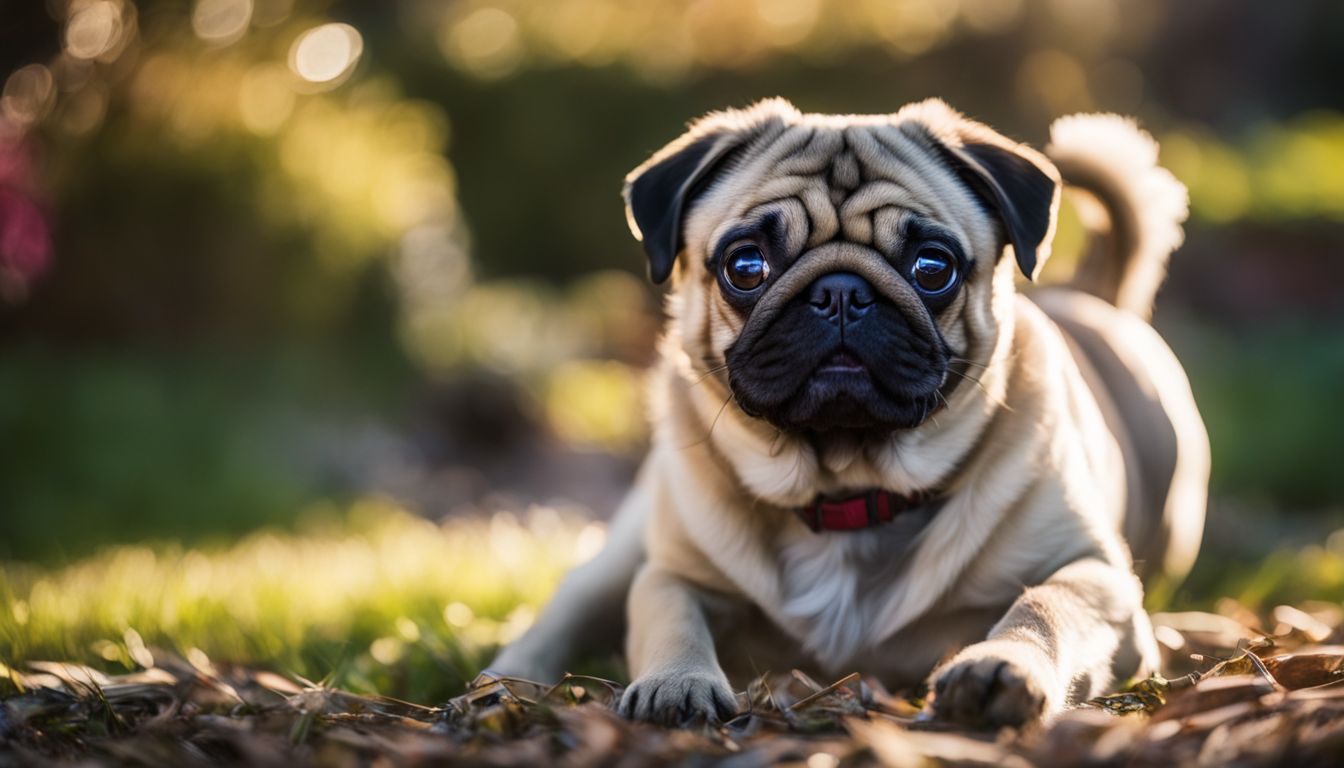
Pugs often surprise people with their charming and affectionate nature. These little dogs pack a lot of personality into a compact frame, displaying traits of playfulness and adaptability that make them excellent companions for all kinds of families.
They crave attention and love to be part of the action, whether it’s snuggling on the couch or playing in the yard. As we dive deeper into understanding pug temperament, let’s keep in mind their reputation for being gentle and loving.
Despite their small size, pugs can have big emotions, reflecting our own feelings back at us with an almost human-like expressiveness. Their emotional range is wide; they can go from joyful exuberance during playtime to solemn empathy when you’re feeling down.
Don’t mistake this sensitivity for weakness though—pugs bring an extraordinary amount of courage to situations where they feel their loved ones are threatened. This bravery tied with proper socialization results in a well-rounded canine companion who rarely shows aggressive behavior without cause.
Myth Busted: Pugs Are Not Naturally Aggressive
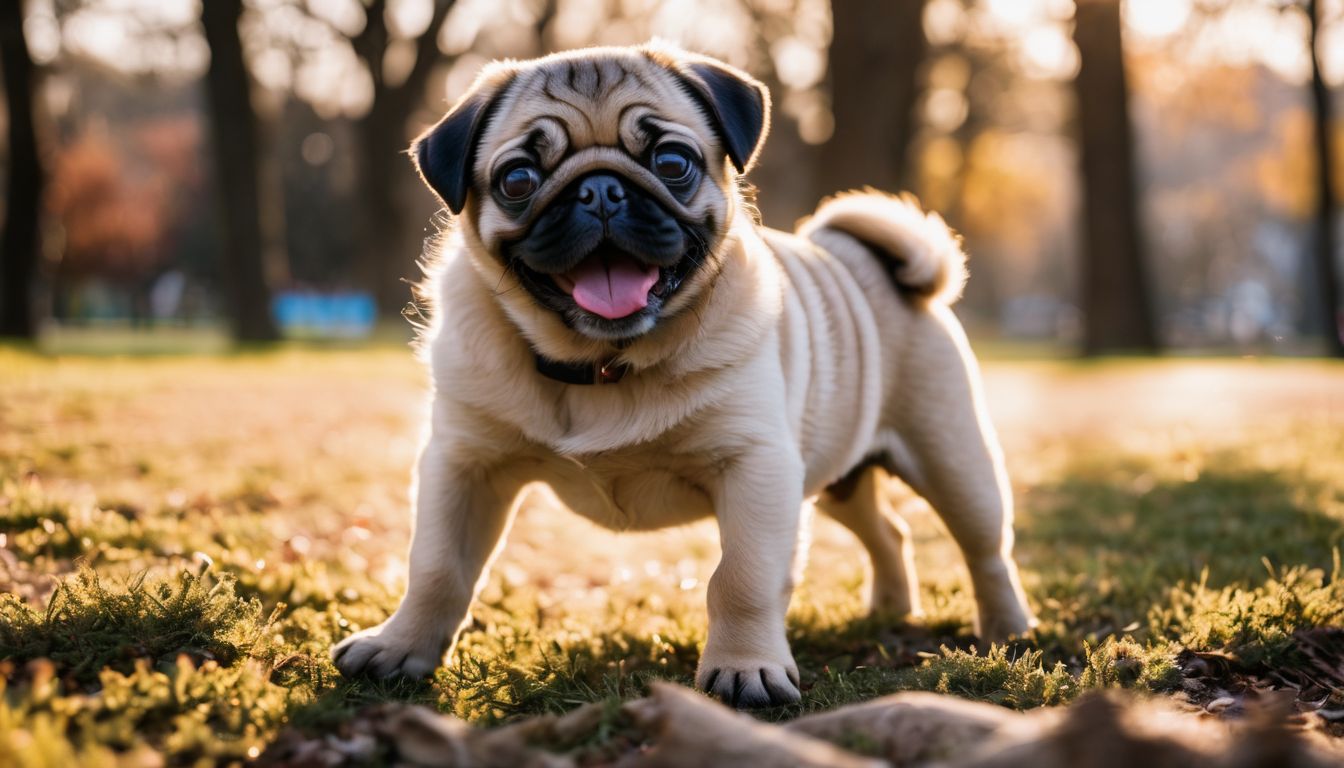
Many believe pugs have a streak of aggression in their nature, but let’s clear the air: these little dogs are not inherently hostile. Their personality is actually quite gentle and affectionate.
With those big round eyes and squished faces, pugs are bred to be lap dogs, craving human companionship and thriving best when they’re part of the family action. They adore being around children and adults alike, showing off their playful side rather than any signs of natural aggression.
Aggressive behavior in this breed may spring up if they're not given enough socialization or positive reinforcement during training. We must understand that any dog can develop undesirable behaviors if not raised with love, patience, and proper guidance.
So it’s crucial for us as responsible pet owners to provide our furry friends with ample opportunities to meet new people and pets in a controlled manner from an early age; this helps prevent aggressive tendencies from ever taking root.
Let’s focus on nurturing their innate sweetness by reinforcing good habits through consistent obedience training using rewards like praise or treats – because after all, every pug deserves to feel secure in its loving home environment without resorting to fear-based responses.
Factors Contributing to Pug Aggression
Genetics and breeding, lack of socialization, and fear and anxiety all play a role in pug aggression. Understanding these factors can help address and prevent aggressive behavior in pugs.
Read on to uncover the truth about pug aggression and how to manage it effectively.
Genetics and Breeding
Pugs, like all dog breeds, can inherit certain traits from their parents. Breeding practices play a crucial role in shaping the demeanor of these furry companions. Pug aggression might be linked to inherited tendencies which could manifest if not managed through proper training and environment.
Selective breeding can sometimes inadvertently emphasize certain unwanted behaviors if breeders focus solely on physical attributes rather than a balanced temperament.
We need to recognize that responsible breeding is key for ensuring pugs have the gentle nature we all love. By choosing ethical breeders who prioritize health and behavior equally, we help prevent aggressive behavior in future generations of pugs.
Let’s encourage standards that promote good-natured characteristics while providing our pups with loving homes to nurture their friendly disposition.
Lack of Socialization
When pugs lack socialization, they may become fearful and anxious in new situations or around unfamiliar people and animals. Without early exposure to different environments, sounds, smells, and other dogs, pugs may develop aggressive tendencies as a way of coping with their insecurities.
Proper socialization helps them build confidence and trust in various settings.
Owners must introduce pug puppies to a wide range of experiences from an early age to help shape their behavior positively. This includes meeting new people, encountering other pets, exploring different surroundings, and learning appropriate play behaviors.
Fear and Anxiety
Fear and anxiety can contribute to aggressive behavior in pugs. It’s essential for us, as pug lovers, to recognize the signs of fear and anxiety in our furry companions. Factors such as traumatic experiences or lack of socialization can lead to a pug feeling fearful or anxious, which may manifest as aggression.
Understanding these emotions is crucial in helping our pugs feel safe and secure.
Creating a structured environment that minimizes stress triggers and seeking professional help when needed are important steps in managing fear and anxiety in pugs. Seeking guidance from a dog trainer or behaviorist can aid us in addressing these emotional challenges effectively.
Signs of Aggression in Pugs
Growling and snapping, biting and nipping, as well as reactivity towards humans or other animals are all common signs of aggression in pugs. Understanding these behaviors is crucial for addressing and managing aggression in your pug.
Growling and Snapping
Pugs may exhibit growling and snapping behaviors, which can be signs of aggression. It is important to pay attention to these warning signs and understand the underlying reasons behind such behaviors.
Factors such as fear, pain, or stress can trigger a pug’s aggressive response. By recognizing these signals early on, pug owners can take proactive steps to address the root cause and prevent potential escalation.
Understanding the triggers for growling and snapping in pugs is crucial for effective management. Providing a safe and structured environment, along with positive reinforcement training, can help mitigate aggressive tendencies in pugs.
Biting and Nipping
Pugs may resort to biting and nipping due to fear, anxiety, or a lack of bite inhibition. It’s essential to address these behaviors promptly through positive reinforcement training and teaching proper socialization skills.
Encouraging appropriate chewing with toys and redirecting attention away from harmful biting can effectively curb this behavior in pugs. Regular exercise and mental stimulation also play a vital role in preventing destructive chewing tendencies.
When experiencing biting or nipping issues, it’s crucial to consult with a professional dog trainer or behaviorist for tailored advice suited to your pug’s specific needs. Understanding the root cause of biting and nipping is necessary for implementing effective strategies that promote a harmonious relationship between you and your furry companion.
Reactivity towards Humans or Other Animals
Pugs may show reactivity towards humans or other animals due to fear, anxiety, or lack of socialization. This can manifest as growling, snapping, or biting. It’s essential for pug owners to focus on socializing and training their pets to prevent aggressive behaviors towards people and other pets.
Professional help should be sought if a pug displays concerning levels of aggression.
Preventing and Managing Pug Aggression
To prevent and manage pug aggression, it’s important to focus on socialization and training from an early age. Consistent and positive reinforcement, along with providing a structured environment, can also help mitigate aggressive behavior in pugs.
Seeking professional help for aggressive pugs is crucial for addressing any underlying issues and ensuring the well-being of your beloved pet.
Socialization and Training
To help prevent aggression, we must focus on socializing and training our pugs. Without proper socialization, they may become anxious or fearful, leading to potential aggression.
- Introduce your pug to various people, animals, and environments from an early age. This will help them feel comfortable and confident in new situations.
- Use positive reinforcement techniques such as treats and praise to encourage good behavior and discourage aggressive tendencies.
- Enroll in obedience classes to establish clear rules and boundaries for your pug, promoting a well-behaved and balanced pet.
- Create a structured routine that includes regular exercise, playtime, and mental stimulation. A well-exercised pug is less likely to exhibit problematic behaviors.
- Seek professional help if you notice signs of aggression in your pug despite consistent training efforts.
Consistent and Positive Reinforcement
Consistent and positive reinforcement helps pugs learn good behavior and builds a strong bond between the pug and the owner.
- Use plenty of praise and rewards like treats, toys, or affection to encourage positive behavior.
- Stay patient and consistent in training sessions to reinforce good habits effectively.
- Employ positive reinforcement techniques such as clicker training or marker training to strengthen desired behaviors.
- Avoid punishment – based training methods as they can instill fear and erode trust in the pug.
- Incorporate regular training sessions into daily routines to maintain consistency and reinforce obedience.
- Create a predictable environment with clear boundaries to promote understanding and reduce anxiety for the pug.
- Seek professional guidance if encountering challenges, as experienced trainers can offer tailored solutions for individual pugs.
Providing a Structured Environment
Pugs thrive in a structured environment, where they feel secure and understand the consistent routine. Regular feeding times, walks, playtime, and training sessions help create predictability for pugs.
By setting clear rules and boundaries within the household, pugs can better grasp what is expected of them, leading to reduced anxiety and potentially lowering the risk of aggressive behavior.
Consistent exercise schedules also contribute to their mental well-being by expending excess energy and preventing behavioral issues.
Establishing a designated space for your pug that includes comfortable bedding, toys, and water can aid in reducing stress levels. Moreover, maintaining a calm atmosphere at home with minimal disruptions during rest or meal times can greatly benefit their overall sense of security and contentment.
Seeking Professional Help for Aggressive Pugs
If your pug is showing signs of aggression, it’s crucial to seek professional help from a certified dog behaviorist or trainer. Professional intervention can provide tailored strategies to address your pug’s specific aggressive behaviors and work on modifying their responses.
Additionally, consulting with a veterinarian is essential to rule out any underlying health issues that could be contributing to the aggression. With specialized guidance, you can create a structured plan for socialization, training, and managing your pug’s aggression effectively.
Seeking professional help for aggressive pugs allows for early intervention and comprehensive support in addressing the root causes of their aggressive behavior. Expert advice ensures that you receive personalized solutions based on your pug’s unique temperament and environment.
Are Pugs Aggressive Conclusion: Debunking the Myth
In conclusion, the myth of pugs being naturally aggressive has been debunked through an understanding of their temperament and behavior. It’s essential to address aggression in pugs by considering factors such as genetics, training, socialization, and environmental influences.
By implementing proactive measures like positive reinforcement training and seeking professional help when needed, pug owners can mitigate any potential aggression and foster a loving bond with their furry companions.
Understanding the truth about pug aggression empowers owners to create a safe and nurturing environment for their beloved pets.
Are Pugs Aggressive FAQs
1. Are pugs naturally aggressive dogs?
Pugs are typically not aggressive by nature. They tend to have friendly temperaments and make great family pets.
2. What can cause a pug to show aggression towards people or other animals?
Aggression in pugs may come from fear, a past of abuse, resource guarding like their food, or even health issues such as neurological problems or hip dysplasia.
3. How important is socializing for preventing aggression in pugs?
It’s very important! Pups that are well-socialized with humans and other dogs from a young age often show less aggression as they grow up.
4. Can dog training help if my pug acts aggressively towards others?
Yes, professional dog training can definitely help correct behavior problems in aggressive pugs through desensitization and teaching them how to cope with high-stress situations appropriately.
5. Should I consult a vet if my pet shows signs of sudden aggression?
Absolutely! If your once-calm pup starts barking or acting aggressively out of the blue, it’s critical to get veterinary care to rule out any pain or disorders that might be causing this change.
6. Does neutering affect a pug’s aggressive behavior?
Neutering may reduce some forms of aggression linked to dominance behaviors because it lowers hormone levels that influence such actions.

